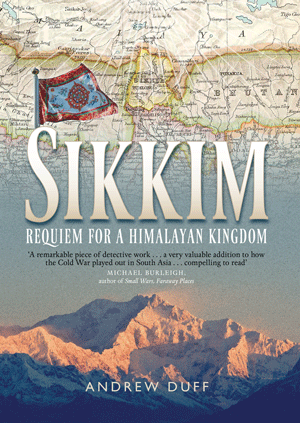The first time I heard of Vipassana meditation was in India in December last year. Justin, a seasoned traveller heading for Auroville on a Royal Enfield motorbike, told me about the increasingly popular 10-day courses in hushed tones, as if he was relating a ghost story.
“It’s really serious, man… ten days without a word – can you imagine that?” There was a short pause as it sank in. Ten days sounded a very long time indeed. I’d never even meditated. But there was something intriguing in the idea of being silent for ten days.
A month later in the Yoga Ashram some of the myths about Vipassana’s effects were dispelled by three girls who had completed it. “Oh yeah, it’s tough” said one. “You go a bit crazy after 5 or 6 days, but then it’s pretty cool…” Going crazy? This was starting to get interesting.
And when I read some of India’s top CEOs find the time to do 10 days of Vipassana every year without fail, I felt like I had no excuses. If they had the time, I definitely had the time. I found a centre in Malaysia that was running a course that fitted with my plans and signed up, with (I have to admit) a secret smile at the irony of doing a Buddhist meditation course in a Muslim state.
A journey from the inside out into a mad, mad world
4.30am on Day One. The meditation hall was so dimly lit that it felt like the light was battling the darkness. I crossed my legs for the first time with some trepidation, recalling my mental wrestling and physical wriggling during mere 20 minute sessions at the Yoga Ashram. My practice since then hadn’t exactly been what you would call ‘diligent”. Now I was embarking on 100 hours of a famously challenging technique, over 10 days. Ten days of navel-gazing… had I gone mad already?
“Vipassana” is a meditation technique discovered by Buddha 2500 years ago. It is a particularly pure form of meditation, and far from introspective. It is still concerned with stopping the mind completely, but in Vipassana, the purpose isn’t communication with a God – it’s to turn outwards, understand how impermanent everything is in reality, and therefore to engage with the external world in a positive and compassionate way. In the process, you rid of some of the bad stuff that we all carry around, and get to meet your Self.
The latest in a line of teachers, purportedly stretching back to Buddha himself, is S N Goenka. Goenka has been so effective in spreading the technique’s popularity through 10-day courses (there are centres all over Asia and the world) that he can no longer teach them all himself. Instead, instructions and chanting on every course (at the start and end of each 1-2 hour sitting) come in the form of his disembodied flowing Indian voice wafting through the meditation hall.
In the evenings, this voice was given a face for 90 minutes, as we sat listening to a “discourse” from Goenka, who had an uncanny knack for knowing exactly what had been going through our heads during the preceding day. Warm and mellifluous, his voice begged mimicry, but that had to wait – for nine days, you must observe “Noble Silence”, complete absence of verbal, physical or visual (no eye contact) communication with other students so that the mind gets a decent shot of achieving silence.
The first few days were an extraordinary exercise in becoming aware of just how many irrelevant (and random, so random) thoughts go through your head each day as we became aware of what it means to meditate properly. Thoughts of the near and past future jostled for space with memories that I‘d forgotten even existed..
It all felt suspiciously easy. During those first two days we were given considerable leeway on movement during each 1-2 hour session. and Goenka’s slow sonorous delivery at the start of every session helped to sear his instructions deep into my cortices and develop a habit. “Be very aware, very attentive, very vigilant. Work patently and persistently, patiently and persistently. Work diligently… diligently…” Even the body adapted well, shifting to two meals a day ( 6.30am and 11am, with only fruit at 5pm to keep the wolf from the door in the evening). Time slowed, as the extraordinarily regular rhythm of life that mediation brings was established.
Crank down the volume
But on day three, Goenka shifted things to the next level. Unbeknown to us, the first three days had been mere warm-up – we hadn’t actually started learning Vipassana yet, he informed us. While this was ever so slightly disheartening, when the real essence of the technique was explained, it at least had the benefit of keeping things interesting by setting a new challenge. And for Vipassana from Day Four, things would be stricter. In a display of “Aditthana”(strong determination), we would now have to remain motionless for three of the ten hours each day. Ouch.
It is impossible to explain Vipassana and what happens to your mind. The next five days were a deeply personal journey that it would be impossible to describe without sounding a bit ridiculous; which is, of course, precisely why Goenka insists that experience over 10 days is the only way to learn.
Suffice to say that I did feel more than slightly crazy on Day Six (those thoughts just don‘t want to stop), I leaked gallons of water both from the eyes and the nether regions in one of the strangest “clearouts” of my life on Day Seven, and I had some incredible insights into many aspects of my life on Days Eight and Nine.
As Noble silence was broken on Day Ten and at last we could discuss and compare notes, it quickly became clear that experiences of the technique differ. But there was not one person who felt they had failed to gain from the ten days.
Vipassana is a truly extraordinary and rewarding experience which is bringing greater peace of mind to increasing numbers of people. In fact, I’d probably vote for a party that suggested it as a new form of National Service in the UK. Non-sectarian, easy to comprehend and with tangible benefits, it is now even being used to great effect in many prisons in India and even in America.
I left the centre with a happy heart and a clear mind. I felt ready for the final step in my overland journey from India – one last long-distance railway journey, down through Malaysia to Singapore.
[to be continued…]



